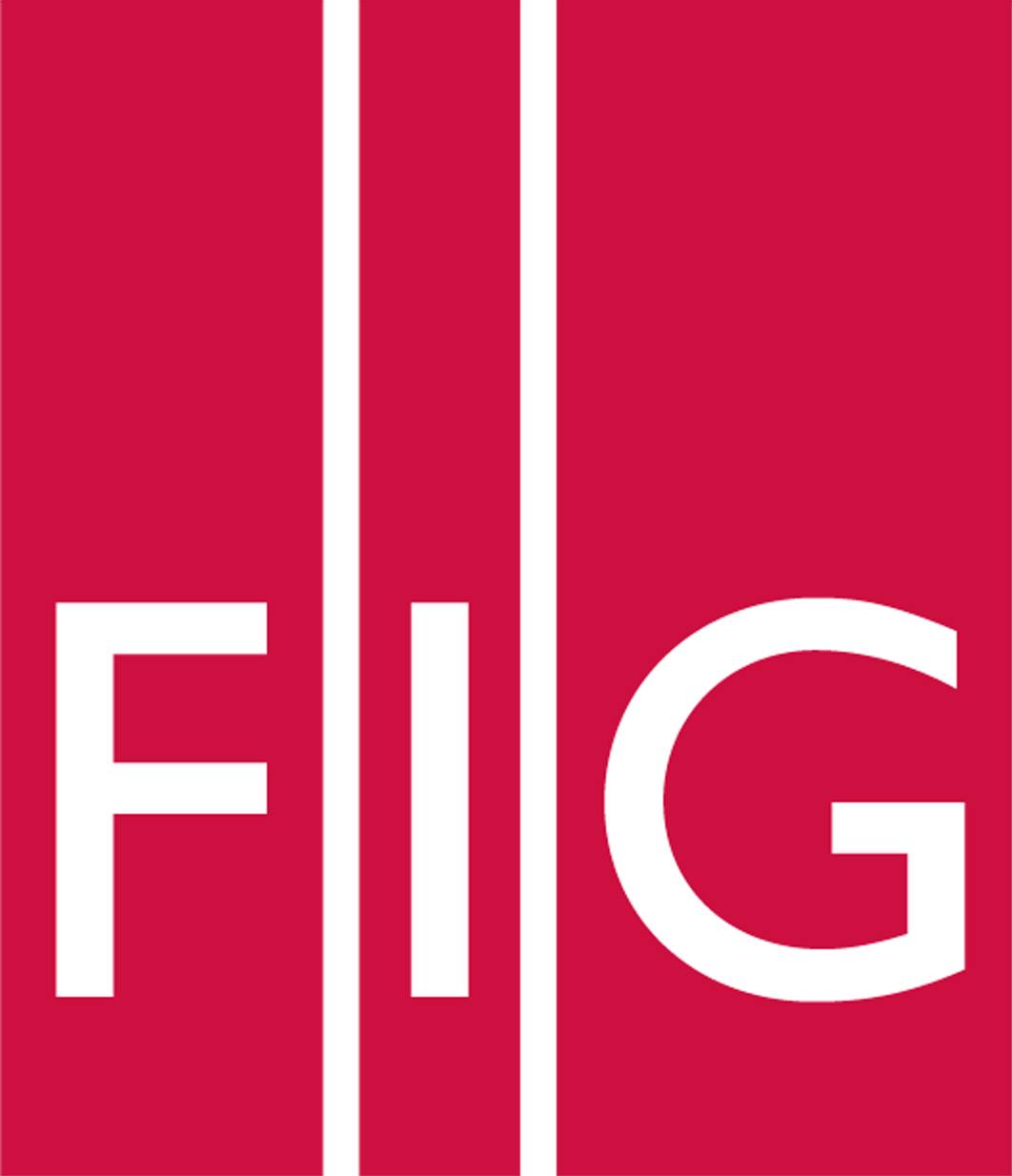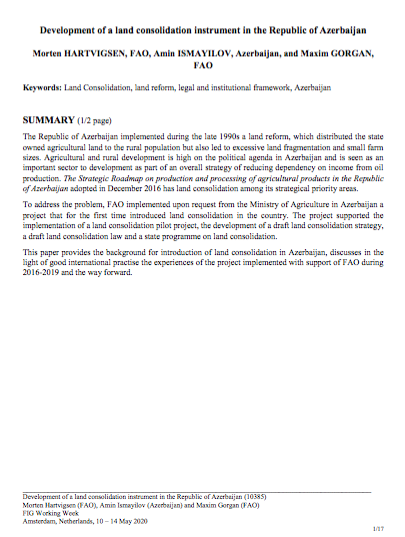Focal point
Location
FIG is the premier international organization representing the interests of surveyors worldwide. It is a federation of the national member associations and covers the whole range of professional fields within the global surveying community. It provides an international forum for discussion and development aiming to promote professional practice and standards.
FIG was founded in 1878 in Paris and was known as the Fédération Internationale des Géomètres. This has become anglicized to the International Federation of Surveyors. It is a UN-recognized non-government organization (NGO), representing more than 120 countries throughout the world, and its aim is to ensure that the disciplines of surveying and all who practise them meet the needs of the markets and communities that they serve.
The FIG vision
A modern and sustainable surveying profession in support of society, environment and economy by providing innovative, reliable and best practice solutions to our rapidly changing and complex world, acting with integrity and confidence about the usefulness of surveying, and translating these words into action.
The role of FIG
FIG’s activities are governed by a work plan, which is approved by the General Assembly and reviewed by Council as its tenure progresses. The current work plan with the motto “Ensuring the Rapid Response to Change Ensuring the Surveyor of Tomorrow” guides Council, Commissions, Networks and Task Force in their activities.
FIG supports the role of a prosperous and sustainable profession of surveyors to provide solution functionality, reliably, affordably for a complex and rapidly changing world that cannot wait, and to translate a sustainable development agenda into action. FIG supports international collaboration among its members for the progress of surveying in all its fields and applications. FIG has a close cooperation with United Nations relevant bodies, World Bank, and its sister associations and has been globally recognized as the leading international non-governmental organization on geospatial information and the management of “land”, the “sea” and the “built” environment. It is within the surveyors’ task to determine the size and shape of the earth, to map its surface and to manage it in a sustainable way.
Resources
Displaying 6 - 10 of 49Development of a land consolidation instrument in the Republic of Azerbaijan
The Republic of Azerbaijan implemented during the late 1990s a land reform, which distributed the state owned agricultural land to the rural population but also led to excessive land fragmentation and small farm sizes. Agricultural and rural development is high on the political agenda in Azerbaijan and is seen as an important sector to development as part of an overall strategy of reducing dependency on income from oil production.
Joint ISO/TC211 and OGC Revision of the LADM: Valuation Information, Spatial Planning Information, SDG Land Indicators, Refined Survey Model, Links to BIM, Support of LA Processes, Technical Encodings, and Much More on Their Way!
ISO standards, which are actually being applied, are subject to periodic revision, typically in a 6 to 10-year cycle. A UN-GGIM Meeting of the Expert Group on Land Administration and Management was held on 14-15 March 2017, in Delft and the main conclusion was that the revision of LADM was indeed needed in order to provide better tools to improve tenure security and better land and property rights for all.
LADM-based Israeli Country Profile: Toward Implementation of 3D Cadastre Registration
Land is a valuable and finite resource, particularly in a small country such as Israel. A variety of drives, such as: urbanization and smart utilization of space, is prompting the stakeholders to promote new land policies. These policies should reflect the societal needs and demands as well as factor in and balance between numerous aspects. Furthermore, in recent years the ecological angle, forest and species preservation have become more and more acute, urging in turn for an even stricter land related actions.
Analysis of the Third FIG 3D Cadastres Questionnaire: Status in 2018 and Expectations for 2022
The 3rd FIG 3D-Cadastres Questionnaire was conducted and distributed by the end of 2018, with an extended deadline of 15th of January 2019. The questionnaire survey is a part of the FIG working group 3D-Cadastres activities for the period of 2018-2022.
What would title registration bring to a deeds system with high quality land information?
An important part of a land administration system that is aimed at constantly reflecting the current right holders of the land and supporting the real estate market, is the system behind the registration of rights, restrictions and responsibilities. Over time the way land transactions have been evidenced, moved from oral agreements, via private conveyancing to registration of deeds, and ultimately registration of title (Larsson 1991).




